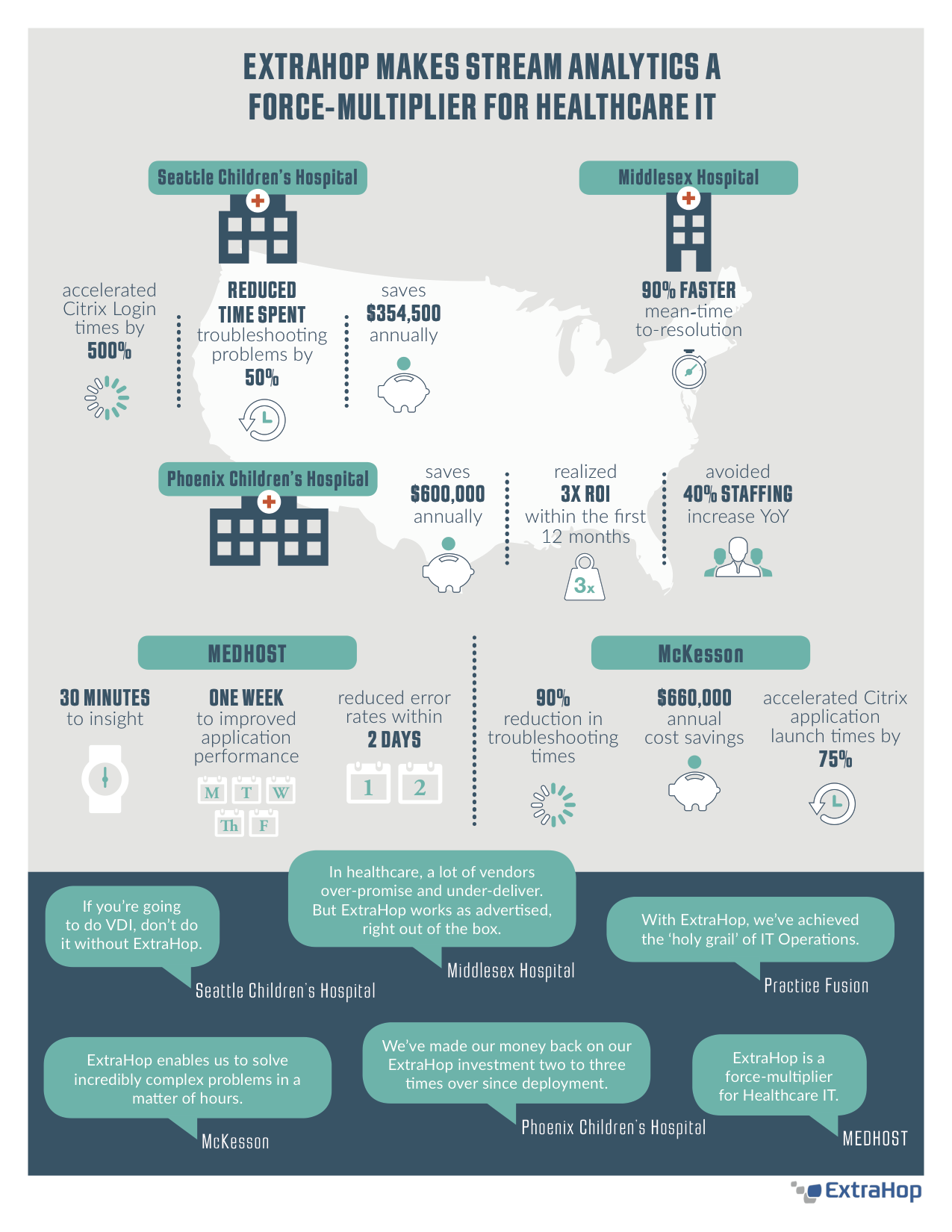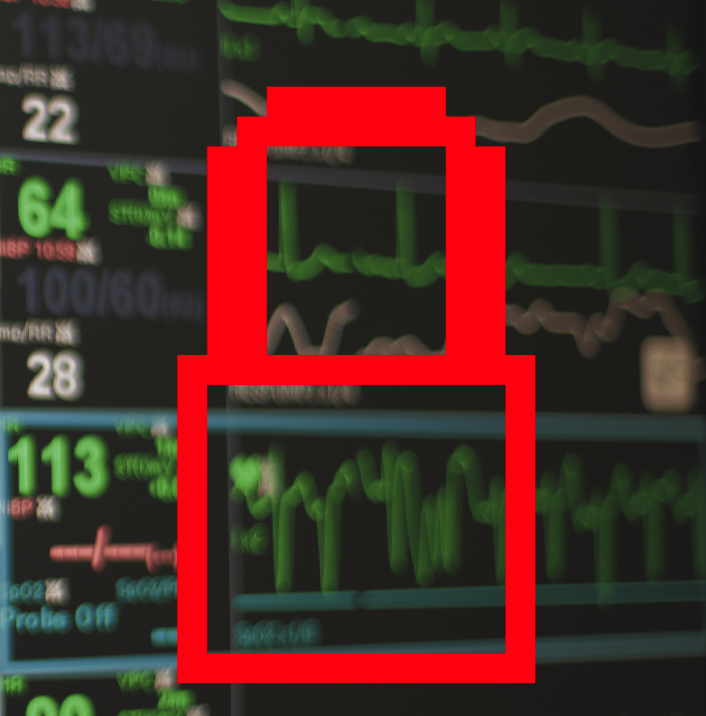Definition: Healthcare analytics is a discipline that merges electronic health records (EHR), big data analytics practices, and IT operations to enable data-driven decision making in clinical settings.
The Basics of Healthcare Analytics & Informatics
Big Data Analytics is a hot topic in just about every industry now, and while the term is overused, big data does have real potential to transform the healthcare industry in ways that benefit healthcare providers, and most importantly, patients.
One of the biggest challenges in healthcare IT is that hospitals may have dozens or hundreds of systems storing, processing, and sharing data that all need to play nice together. Any one system that isn't reliable can impact patient safety. To make things more complex, these systems need to be highly secure to comply with the Health Insurance Portability & Accountability Act (HIPAA). The difficulty of achieving interoperability between healthcare IT systems is staggering.
"We have about 180 different vendor systems in operation at the hospital, ranging from meal service for the patients to the most sophisticated radiology and cardiology imaging products available.
A children's hospital is a microcosm of every part of life, so we have a school, we have a cafeteria; we have a security department – just a vast array of systems. And on top of that, we have all of our infrastructure.
There are a lot of sites, and a lot of pieces of clinical equipment that attach to the network and produce data that have to be monitored and often can go rogue. Everyone's got a niche product, and everything has to be monitored, and sometimes it's hard to develop a really controlled growth pattern for these things."
David Higginson, CIO, Phoenix Children's Hospital
Health IT Terms To Know
There are a few terms you need to know to form a good basic understanding of how health IT analytics works, and the value it can provide.
Electronic Health Records (EHR)
Health data stored in digital form. EHRs (or EMRs) are a huge piece of the health IT analytics puzzle.
HL7
HL7 is the standard protocol that is used in healthcare organizations to communicate clinical information between systems. For example, when a patient is admitted to a hospital, an HL7 message may go out to communicate their info to the broader hospital system.
FHIR (Fast Healthcare Interoperability Resources)
This is another standard from the HL7 organization that provides RESTful ways to transmit the same clinical info as HL7. This protocol makes interoperability between systems a lot easier, and is being adopted rapidly.
ICD-10
This is the standard for how healthcare providers and insurers communicate about the exact nature of a patient's medical condition for billing and record keeping purposes.
Six Ways Wire Data Analytics Enables Real-Time Healthcare Systems
Healthcare organizations face a transformational shift with the rise of what Gartner has dubbed the "real-time healthcare system." ExtraHop equips healthcare organizations with unprecedented visibility through wire data analytics so that they can adapt to new market demands. Find out how.
HL7 & FHIR - Linchpins of Healthcare IT
Of all the data flowing through any given healthcare organization's IT system, the HL7 and FHIR messages have the greatest potential to provide life-changing insight if analyzed and interpreted effectively. These are the protocols most clinical systems and machinery use to communicate with each other. Learn more about FHIR and health IT interoperability.
3 Examples of How Monitoring HL7 & FHIR can Improve Hospital Operations
Admits and Discharges
Every time a patient is admitted or discharged from a hospital, an HL7 message crosses the wire conveying the details of the event. Tracking these messages can show the hospital trends about when the most people or the fewest people are admitted, and what their ailment was. The hospital can then optimize their staffing around actual patient activity.
Prescriptions & medication orders
When a doctor orders meds from the hospital pharmacy, whether it's Advil or anaesthetic for surgery, it needs to show up on time. This relies on HL7 messages getting where they need to go, fast.
Trending & tracking
For regional hospital systems, aggregating data from different facilities can provide a window into how diseases are spreading across a wide area, such as hay fever and seasonal flu.
Healthcare Informatics & Lean IT
Healthcare informatics is the process of gathering health data, analyzing it, presenting it and coming up with plans of action to use the findings to improve healthcare outcomes. Monitoring and analyzing more health IT data gives health informatics professionals more of what they need to improve patient care and hospital performance.
This is where Lean IT comes in. The complexity of Health IT and Health Informatics has caused healthcare leaders to look for ways to pare down their IT operations, to simplify, streamline, and remove complications, because every additional system adds potential failure points that could cost lives. This simplification is referred to as Lean IT, and it is a concept that has been gaining traction in engineering for a long time, and is now showing its utility in healthcare as well.
For more on how Lean IT makes healthcare much, much better, check out this webinar from longtime hospital CIO Drex DeFord.
Streaming Analytics for Health IT

Streaming wire data analytics is the next step forward for Health IT, Lean IT, and Health Informatics to achieve their goals of increasing efficiency and improving patient safety and treatment outcomes.
Streaming analytics involves analyzing all the data flowing through a healthcare system's IT properties in real-time, without necessarily needing to save the data itself to disk, so that you can start to understand patient flow and experience more broadly without violating security or privacy regulations.
Security & Compliance

Last, but far from least, we need to discuss compliance. Health data is strictly regulated. You've probably heard of HIPAA, the Health Insurance Portability & Accountability Act, which places strict rules on how healthcare organizations can store, share, and transmit patient data. This governs everything from on site encryption to whether your doctor is allowed to share your test results with you or anyone else via email or other potentially insecure channels.
HIPAA has two commonly referenced parts, the HIPAA Privacy Rule, and the HIPAA Security Rule, that lay out the requirements for how healthcare data can be stored, transmitted, shared, and used. You could write a book and not get through the implications of HIPAA, and other people have, so that's all we'll say about it here.
As IT gets more complex overall, real-time analytics will get more important both for controlling the rampant growth of IT needs, and for finding ways to make healthcare more efficient without sacrificing patient experience.
Like we said before, this is a staggering challenge, but with the powerful combination of Lean IT and streaming wire data analytics, it can be done.
Healthcare Resources
To learn more about Healthcare Data Analytics, we invite readers to read through and share the following resources: